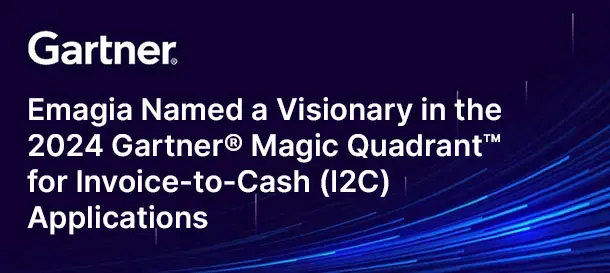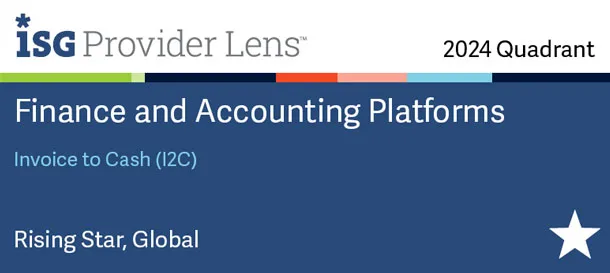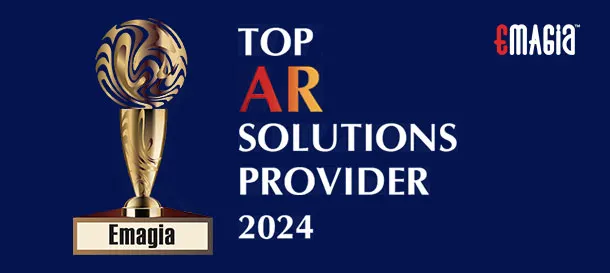In the fast-paced world of business, managing cash flow is not just important—it’s absolutely critical. For many organizations, the accounts receivable process can be a major bottleneck, slowing down cash flow and consuming valuable resources. This is where a dedicated accounts receivable software can make a transformative difference. This comprehensive guide is designed to be your definitive checklist, helping you navigate the complex landscape of receivables management software and find the perfect solution for your business. We will break down everything from core features and integration capabilities to pricing and vendor support, ensuring you make an informed decision that will empower your finance team and accelerate your cash cycle.
Part 1: Understanding the Foundation of Accounts Receivable Management
Before you begin evaluating software, it’s essential to understand the modern role of accounts receivable management. It’s no longer just about sending out invoices and waiting for checks to arrive. Today’s AR function is a strategic operation focused on maintaining liquidity, minimizing bad debt, and fostering strong client relationships. The shift from outdated, manual methods to a streamlined accounts receivable program is a non-negotiable step for any business looking to thrive.
The Transition to Accounts Receivable Automation
The traditional AR process is riddled with inefficiencies. Manual data entry, paper invoices, and reactive collections efforts lead to errors, delays, and a high Days Sales Outstanding (DSO). By embracing accounts receivable automation, businesses can transform these processes. An ar automation software frees up staff from tedious administrative tasks, allowing them to focus on strategic activities like nurturing key client relationships and resolving complex payment issues. This is the first step on your journey to a more robust financial operation.
Part 2: The Core Checklist of Essential Features
Your journey to selecting the right accounts receivable program starts with a detailed evaluation of its features. This is the most critical part of your checklist, as the functionality of the accounts receivable management software will directly impact your team’s efficiency and your company’s cash flow. Here, we’ll dive deep into the must-have capabilities that distinguish a great solution from a mediocre one.
Automated Invoicing and Delivery
Look for a system that automates the entire invoicing lifecycle. The ideal accounts receivable automation software should be able to generate professional, branded invoices automatically, based on predetermined schedules or project milestones. It should also support multiple delivery channels, including email, a secure customer portal, and even traditional mail for clients who still prefer it. This ensures invoices are sent promptly and reach the right person every time. The ability to customize invoice templates and include payment links directly on the invoice is a significant advantage.
Dynamic Dunning and Reminder Workflows
A key feature of any effective ar automation software is its ability to manage collections proactively. A great system will allow you to configure automated, multi-channel dunning sequences. These sequences can send gentle reminders before an invoice is due, followed by escalating notices after the due date. The best accounts receivable collections software will allow you to customize these messages based on the client, invoice amount, or age of the debt, ensuring the communication is both effective and professional.
Automated Cash Application
The process of matching incoming payments to open invoices is often a manual, time-consuming task. The best automated accounts receivable software utilizes advanced technology, often with AI and machine learning, to automate this process. It can match payments received via wire transfers, ACH, and checks to the correct invoices, reducing manual effort and improving the accuracy of your financial records. This capability is a cornerstone of any truly modern receivables management software.
Customer Payment Portal and Self-Service
Today’s clients expect convenience. A secure, user-friendly customer portal is a game-changer. This feature allows your clients to view all their open and paid invoices, download statements, and make payments 24/7. An accounts receivable payment software that includes a robust portal can drastically improve the customer experience and encourage faster payments. Look for a portal that supports various payment methods, including credit cards and ACH, to give your clients options.
Collections Management and Analytics
For more complex AR departments, a good accounts receivable collection software provides a centralized hub for all collections activities. This includes creating and assigning collections tasks, tracking communication history, and managing promises to pay. Furthermore, sophisticated ar analytics software offers real-time insights into your collections efforts. It can prioritize accounts based on risk, forecast cash flow, and track team performance, giving you the data you need to make smart, strategic decisions about your collections process.
Reporting and Analytics Dashboards
Data-driven decisions are a hallmark of a high-performing finance team. The best accounts receivable software offers powerful, customizable reporting and analytics. You should be able to easily track key performance indicators (KPIs) like DSO, collection effectiveness index (CEI), and payment aging. Look for a system with real-time dashboards that provide a clear, visual overview of your financial health. This helps you identify trends, spot potential problems early, and optimize your overall accounts receivable management strategy.
Security and Compliance
In a world of increasing data breaches, security is paramount. Any ar management software you choose must adhere to strict security protocols. This includes robust data encryption, secure payment processing (PCI compliance), and user access controls. Ensure the vendor is transparent about its security practices and compliance certifications. Choosing a secure platform protects not only your company’s data but also your clients’ sensitive information, building trust and confidence.
Part 3: Implementation, Integration, and Scalability
The functionality of a software is only one part of the equation. You must also consider how it will fit into your existing technology stack and how it can grow with your business. The best accounts receivable automation platform should integrate seamlessly and be flexible enough to meet your needs both today and tomorrow.
Seamless Integration with ERP and Accounting Systems
A stand-alone AR system is a missed opportunity. The ideal solution will integrate bi-directionally with your existing ERP or accounting software for accounts receivable accounting software. This ensures that data—such as new invoices, payments, and customer information—is automatically synchronized across all platforms. Look for a solution that offers out-of-the-box connectors for popular systems like QuickBooks, NetSuite, SAP, or Oracle. This a key differentiator between a good and a great accounts receivable application.
Onboarding and Data Migration
Transitioning to a new system can be a daunting process. The vendor you choose should offer a clear, structured onboarding plan. This includes assistance with data migration, which is the process of moving your existing client and invoice data into the new platform. A smooth and well-supported implementation process is crucial for minimizing disruption to your daily operations. A great accounts receivable management solution will have dedicated specialists to guide you through this process.
Scalability for Future Growth
Your business is dynamic and constantly evolving. The receivables software you choose should be able to scale with you. Whether you’re a small business just starting to automate or a large enterprise with global operations, the platform should be able to handle an increasing volume of invoices, users, and transactions. Consider if the accounts receivable software for small business can also handle the demands of a growing company with multiple locations and currencies.
Part 4: Evaluating Vendors and Support
The vendor behind the software is just as important as the technology itself. You are not just buying a product; you are entering into a partnership. A good vendor provides more than just a tool; they provide support, expertise, and a commitment to your success. Here is what to look for when evaluating potential ar automation companies.
Reputation and Industry Experience
Research the vendor’s reputation and its track record in the industry. Look for companies with a proven history of providing reliable and effective ar software. Read case studies and customer reviews to see how they have helped other businesses similar to yours. A company with deep industry experience is more likely to understand your specific challenges and provide a solution that truly addresses them. This is especially true for specialized platforms like ar deduction management software.
Customer Support and Training
What happens when you have a question or an issue arises? The quality of a vendor’s customer support is critical. Ask about their support channels (phone, email, chat), response times, and available resources like knowledge bases and video tutorials. A great accounts receivable solution will also offer comprehensive training for your team, ensuring they are proficient in using the new system from day one. This investment in training ensures you get the most out of your receivables management software.
Part 5: Cost Analysis and Return on Investment (ROI)
Choosing a new accounts receivable system is a significant investment, and it’s important to understand the financial implications. The goal is to select a solution that not only fits your budget but also delivers a strong return on investment. The cost savings and revenue increases from an efficient AR process can quickly outweigh the initial and ongoing expenses.
Understanding the Pricing Models
Most ar automation tools and platforms are offered on a SaaS (Software as a Service) basis. This typically involves a monthly or annual subscription fee. Be sure to understand what’s included in the pricing. Is it based on the number of users, the number of invoices processed, or the total revenue? Are there extra fees for additional modules, advanced analytics, or premium support? A transparent pricing model is key to avoiding unexpected costs down the line.
Calculating Your ROI
To justify the investment, you need to calculate the potential return. The benefits of a quality accounts receivable program are quantifiable. Think about the direct cost savings from reducing manual labor, printing and mailing expenses, and bank fees. Consider the revenue impact of faster payments, reduced DSO, and lower bad debt write-offs. A good accounts receivable management tool will help you achieve these financial gains, making the software a profit center, not just a cost center.
How Emagia Transforms Your Receivables Management with AI-Powered Intelligence
Emagia’s innovative suite of AI-powered solutions represents the next generation of accounts receivable automation solutions. By moving beyond simple automation, Emagia leverages artificial intelligence to provide predictive, prescriptive, and cognitive capabilities that fundamentally change how you manage your receivables. With Emagia, you get more than just a platform; you get a strategic partner for your finance operations.
Emagia’s AI assistants can automate up to 90% of your cash application process, accurately matching payments with invoices even for complex, partially paid, or underpaid transactions. The system proactively analyzes historical payment behavior to predict when customers will pay and what the potential risk of default is, allowing your team to focus their energy on the most critical accounts. This is a level of intelligence that traditional accounts receivable management software simply cannot offer.
The platform also features a robust digital assistant for collections that can automate routine communications, escalate issues, and even predict the best communication channel and time for each customer. This intelligent approach not only accelerates cash flow but also strengthens customer relationships. By choosing Emagia, you are choosing an accounts receivable platform built on a foundation of cutting-edge AI, delivering unmatched efficiency, insight, and control over your entire order-to-cash process.
Frequently Asked Questions About Accounts Receivable Software
What is the difference between accounts receivable software and accounts payable software?
While often bundled together in a larger accounting suite, accounts receivable and payable software address opposite sides of the same coin. Accounts receivable software focuses on managing the money owed to your business from customers, while accounts payable software manages the money your business owes to its suppliers and vendors. They both aim to streamline financial processes but handle different flows of cash.
How does accounts receivable automation help small businesses?
For a small business, time is money. Accounts receivable software for small business eliminates many of the time-consuming manual tasks like invoice creation, sending reminders, and reconciling payments. This frees up the owner or a small finance team to focus on growing the business and serving customers, rather than chasing down late payments. It provides a simple, efficient way to manage cash flow without a huge overhead.
Can accounts receivable software integrate with my existing accounting system?
Yes, seamless integration is a critical feature of most modern accounts receivable management software. The best solutions offer integrations with popular accounting software like QuickBooks, NetSuite, and Sage. This allows for the automatic synchronization of data, ensuring that your accounts are always up-to-date across all platforms and eliminating the need for manual data entry between systems.
What are the key benefits of using an automated accounts receivable system?
An automated accounts receivable system provides several key benefits: it accelerates cash flow by reducing the time it takes to get paid, improves efficiency by automating manual tasks, minimizes human error, and provides valuable insights into your financial health. By using a sophisticated ar automation platform, you can significantly reduce your DSO and improve your overall liquidity.
What is a good accounts receivable app for on-the-go management?
A good accounts receivable app, often a mobile version of the main software, allows you to manage your receivables from anywhere. These apps typically provide real-time dashboards to check your cash flow status, the ability to send quick reminders to clients, and an overview of your collections efforts on your smartphone or tablet. This flexibility is a huge advantage for business owners and managers who are frequently out of the office.
Conclusion
Choosing the right accounts receivable software is one of the most impactful decisions you can make for your company’s financial health. It’s a strategic move that transcends a simple software purchase. By utilizing this checklist and focusing on the core automation features, integration capabilities, and the right vendor partnership, you can select a solution that not only meets your current needs but also positions you for future growth. An effective accounts receivable management solution will be a key driver of efficiency, cash flow, and overall financial success for years to come. Start your evaluation process today and take control of your accounts receivables with confidence.




